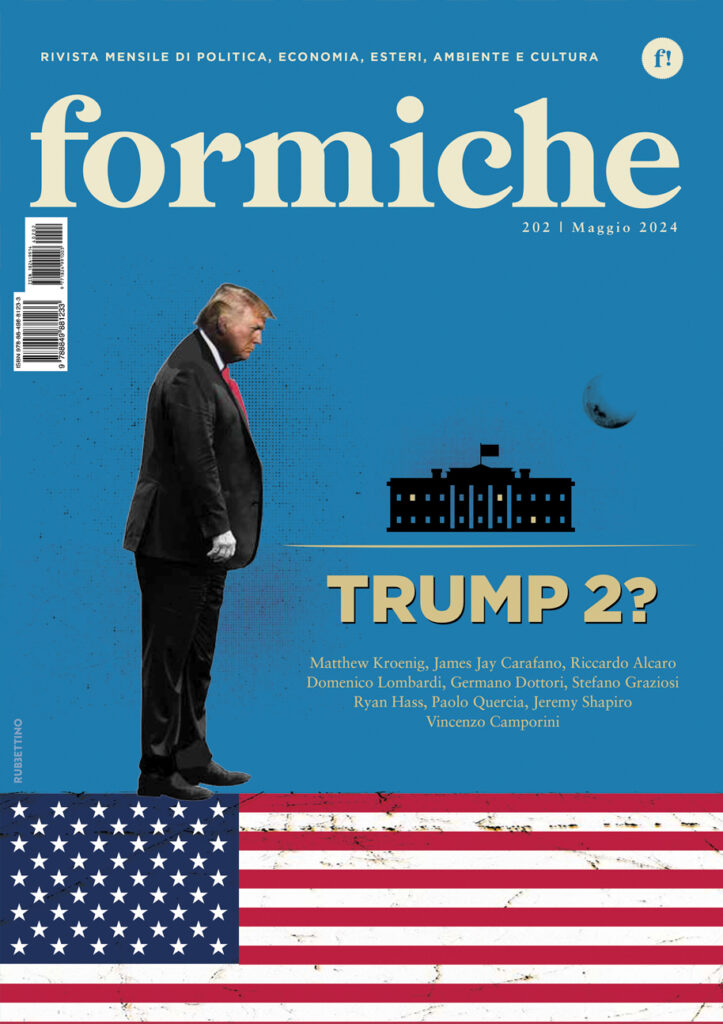Italy’s embattled coalition government is now a year old, but its internal atmosphere is far from festive. Truth be told, the coalition itself was never too strong to begin with, even unthinkable last summer, until it came together to avoid conceding the country to the rising right-wing parties. A global pandemic and several hardships later, it’s still standing. Now, a watershed moment awaits in September. But it’s best to tell the story from the very beginning. Here’s Formiche.net’s compendium on the current Italian government: its birth, its growth, its current state, and the challenges lying ahead.
GENESIS
The current coalition government was born a year ago, on September 5th, 2019, when the anti-establishment Five Star Movement and the centre-left Democratic Party struck an unlikely alliance. This happened because Matteo Salvini, leader of the right-wing League that had been governing together with the 5S, called off his support for the executive in an attempt to convert his stellar consensus into a relative majority in parliament.
Realising that he had gone too far, Mr Salvini then attempted a U-turn, but it was too late: then-prime minister Giuseppe Conte resigned, and president Sergio Mattarella took it upon himself to either find a new majority amid the existing forces, or call for fresh elections.
It’s fair to say that the Dems were, until shortly earlier, the 5S’ arch-nemesis, representing everything they stood against: politics-as-business, the caste, the overlords disconnected from the people. By contrast, the Dems deemed the 5S feckless and destructive populists. But since they were the second and first biggest forces in parliament, the choice was binary: either they allied, or they allowed Mr Salvini and his right-wing allies to sail towards a landslide electoral win.
So, they allied, and invested Mr Conte with a second mandate as prime minister. Matteo Renzi, one of the Democrats who masterminded the alliance, left the party and gave himself more voice by forming another force, Italia Viva, whose votes are few but crucial to pass laws.
The ideological abyss between 5S and the Dems proved to be less dramatic than foreshadowed, as the two parties set themselves on a path of collaborative coexistence, not without their fair share of stomach aches.
WHAT HAPPENED
“We stop today, to run faster tomorrow.” This phrase marked the turning point for prime minister Conte, as he readied the Italians for Europe’s first lockdown in early March 2020.
Until that moment, his approval rating was modest, and that of his government was even lower. The right-wing coalition led by Mr Salvini ranked consistently better in polls (and still does), presenting a compact and defined alternative to the fraught and shaky coalition between two former enemies.
In fairness, the 5S-Dem union wasn’t exactly exuding unity. They chose not to run together in the regional elections in Umbria, and both lost the region to the right. The Dems managed to secure another region, Emilia-Romagna, while the 5S started losing MPs. Those who spoke of an anti-right organic alliance were laughed at, given the unbridgeable rift between the forces.
Then came the pandemic.
As he guided Italy through the first efforts to counter the spread of Covid-19, Mr Conte enjoyed a massive approval bump from the rally-around-the-flag effect. The 5S’s approval rating had halved since they were first elected, the Dems’ remained more or less stagnant, but their coalition leader took enough affirmative action to make the people feel more secure in his hands. Meanwhile, the right-wing coalition lost its oxygen, stunned by the turn of events, and Mr Salvini’s League began to fall in polls.
As we approach the autumn, however, Mr Conte’s “pandemic mandate” that had allowed him to widely employ decrees is exhausting itself. Since securing €209 billion in European recovery funds, he has mostly disappeared from the public scene.
This summer, the 5S and the Dems had to consider if their alliance meant something more than just political survival when presented with September’s regional elections, with seven of the twenty regions up for grabs. The 5S held an internal vote to allow themselves to run with other forces (they couldn’t earlier) but they agreed to run with the Dems in only one region.
During the course of this year, many from both sides began to theorise an organic alliance between the two forces to contain the threat of the rising right. But the existing tensions, many of which are internal to both parties, dampen the likeliness of this outcome.
As for now, no decisions (neither internal nor alliance-wise) will be taken until the next big milestone is passed. On September 20 and 21, seven regions will vote for their administrations, and all of the Italians will vote on a referendum concerning the slashing of the number of MPs – something that the Five Star have wanted for a long time, and some Dems have hesitantly endorsed (but is not liked by a significant margin of both Dem MPs and electors).
WHAT LIES AHEAD
The right-wing coalition still holds the most electoral firepower, according to polls – those who defected the League came around to Giorgia Meloni’s Brothers of Italy, the second biggest and rapidly growing member of the right-wing coalition. And the three leaders (the third is Silvio Berlusconi, leader of Forza Italia) have agreed to run together in the upcoming regional elections: they are projected to win 6 out 7 regions, according to most polls.
The referendum on the number of MPs will most likely pass, as pollsters predict that roughly 70% of the Italians will vote for it. Therefore, the most likely outcome scenario will be that of 15 or 16 regions out of 20 in the hands of the right, and a government weakened by a referendum result that will anger some in the leftmost side.
Many MPs and government leaders have declared that this government will reach the end of its mandate in 2023. The veracity of that statement will most likely become clearer after the projected double hit in late September. Both parties will almost certainly undergo significant reassessment and perhaps question their leadership (the 5S are due for a leadership change) and their agendas. After that moment, the future is indistinct.







